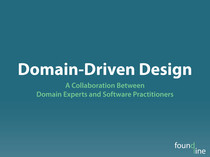The February 2009 issue of Harvard Business Review has an article in their Breakthrough Ideas for 2009 series that addresses What You Need to Know About the Semantic Web. I was happy to see the semantic web being talked about seriously in a business magazine. I think the author is right when he says that many business will be caught off guard by the semantic web. However, I took issue with the author’s implication that the only semantic web technology that mattered was the Resource Description Framework (RDF) and his neglect of other technologies, such as microformats, that may make the semantic web a reality before the RDF vision is complete. Below is a letter I sent to the editor addressing this issue.
Dear Editor:
Tom Ilube is correct when he says that the semantic web is “likely to catch much of the world off guard.” He implies that the technology that will first bring about this change is the Resource Description Framework (RDF). A combination of simpler technologies may make the semantic web a mainstream reality before the World Wide Web Consortium’s (W3C) RDF vision is complete. On the web, simple approaches to solving problems often gain traction before more complex ones. In this case these simpler technologies include Representational State Transfer (REST) and microformats. REST is a concept that was introduced by Roy Fielding in 2000. It is an often overlooked, yet fundamental, building block of the web that has gained more recognition in recent years. Microformats are an incremental “pave the cowpaths” approach to adding richer semantic data to the existing web based on established open standards. Granted, microformats don’t have the same scope as the W3C’s RDF specification and their goals are only somewhat overlapping. However, it is important for readers to be cautious about placing all of their bets on one technology when there is not yet a consensus as to what technology (or combination of technologies) will make the semantic web revolution a reality.
Bradley Holt
Technical Director & Co-Founder
Found Line
Burlington, Vermont




